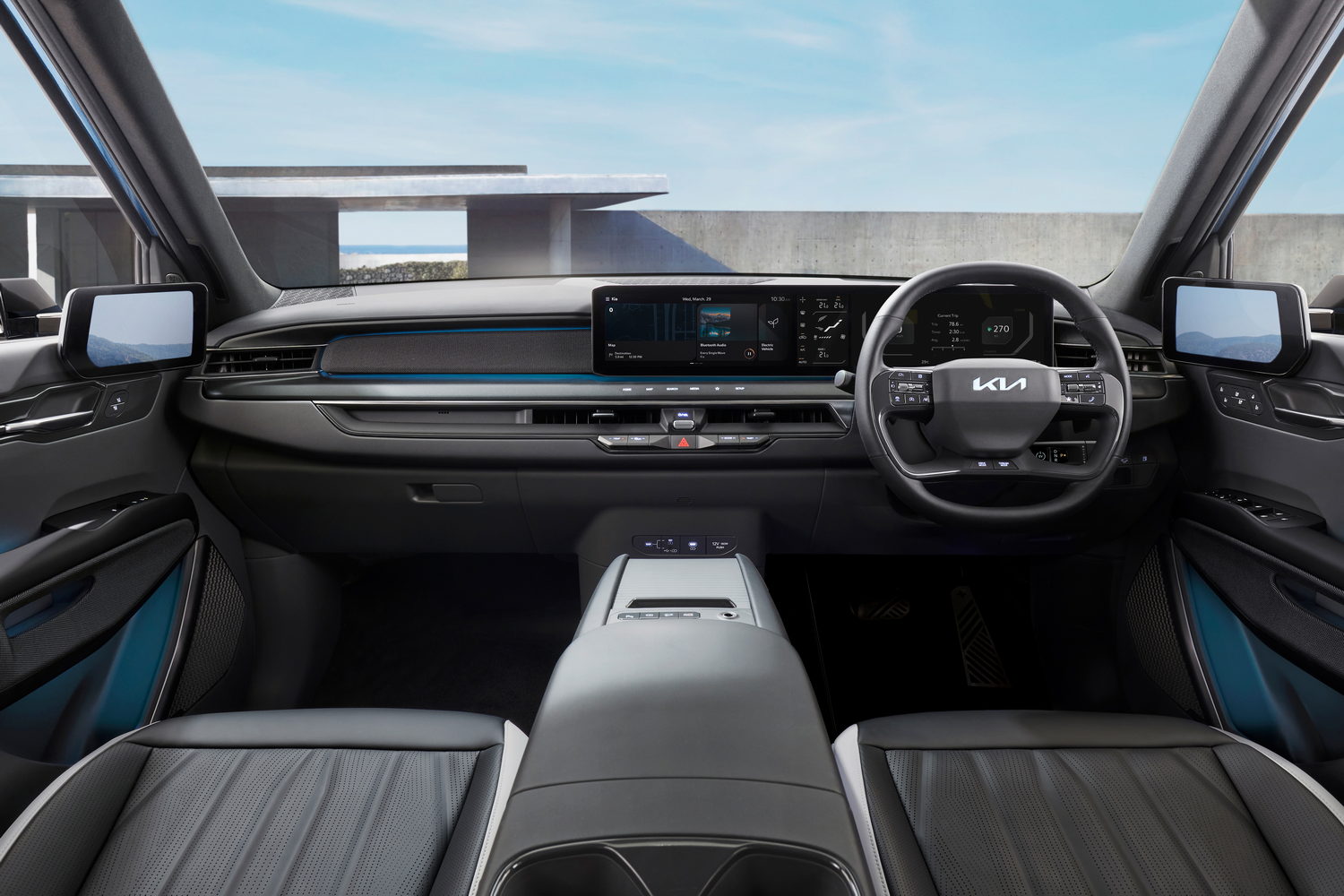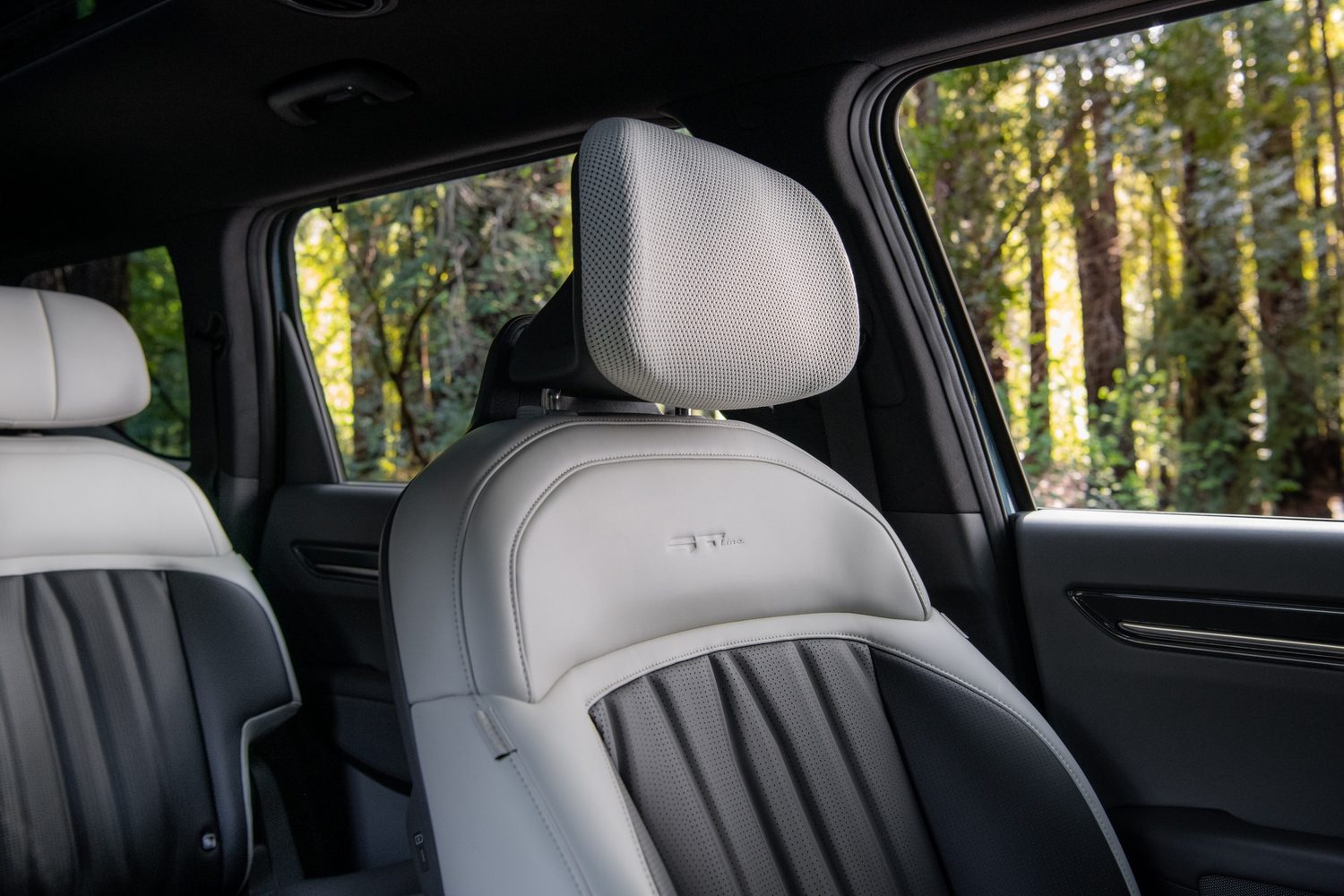Note: This article was written as part of a commercial content partnership between CompleteCar.ie and Kia Ireland.
This is the Kia EV9 and it's the high-flying Korean brand's new range-topping seven-seat SUV. But while yes, it is big, and yes, it is luxurious, and yes, it's certainly roomy, this is a planet-friendly car in more ways than just the obvious one. Here, then, is the Kia EV9's ten-step programme to reduce its climate impact...
1. It's electric

Well of course it is. Kia has already established its 'EV' lineup with the striking EV6, and it's going to expand that again soon with EV5, EV4 and EV3 models. The EV9, as the number suggests, is the pinnacle of Kia's range, but while it looks like a Range Rover rival, it's all electric with a 99.8kWh battery mounted down low in the chassis. That battery holds enough charge for seriously long drives - up to 563km in one go, depending on the conditions. So no more filling up with smelly diesel; it's silent, smooth, clean electric power all the way.
2. It's made of recycled stuff

The Kia EV9 doesn't just reduce the need for fossil fuels when you're driving it, it actually does that as it's being built, too. How? Simple - look around the interior of any car and you'll see lots and lots of plastic. Plastic is a by-product of the petrochemical industry. Which means it's basically made of oil. But what if we could make plastic without drilling for oil? We can - plastic is hugely recyclable, and the EV9 uses lots of what Kia calls 'post-consumer material' or PCP. Basically, your old water bottles can be sliced up, shredded, turned back into fresh, renewed plastic, and used again. The EV9's door panels, for example, use plastics that would otherwise end up in landfill.
3. That's not just fabric...

The soft materials used inside the Kia EV9's cabin are really lovely and tactile, so you'd never believe that they used to be crinkly plastic water bottles too. But that's the glorious thing about recycling - you don't have to use the materials as they were, you can re-make them. So PET plastic (or Polyethylene terephthalate - it's the material drinks bottles are made of) can be turned into yarn, and when you combine that with recycled fibres from old clothes and other material, you get the lovely soft-touch fabric that covers the EV9's seats, headliner, sun visor, garnish and headrests. The interior of each EV9 contains about 70 recycled bottles worth of material.
4. On the net

On the subject of turning plastics into fabric, when you get a chance to have a sit in the EV9, maybe try taking off your shoes (not while driving, please) and let your toes investigate the softness of the carpets. Once again, that lovely soft material is in its second life, and it used to be fishing net. Discarded fishing nets are a major pollutant in the world's oceans, and Kia is fishing (sorry, not sorry) them back out of the water to recycle the material into carpets.
5. Cleaning up the seas

Apart from those fishing nets, the amount of discarded plastic that spills into our oceans is pretty terrifying, and it has led to the dreadfulness of the Great Pacific Garbage Patch - a massive, floating, spinning pile of rubbish that spans 1.6 million square kilometres of the Pacific Ocean. It's awful - a pile of thrown-away plastic that covers more area than some countries. But Kia is helping to clear that up, partnering with seafaring recyclers The Ocean Cleanup to drag the Garbage Patch for plastic that can be used to make bits for cars, such as the EV9. The last sweep by The Ocean Cleanup netted 55 tonnes of material, which is destined for a second life in Kia's models.
6. Not just cleaning

(Author: World Heritage Promotion Team of Korean Tidal Flat. Copyright: © World Heritage Promotion Team of Korean Tidal Flat)
Cleaning up the ocean as it goes is a rather good trick for the Kia EV9, but that's not the only way it's helping to preserve our marine environments. Kia is also helping to preserve the vast tidal mudflats of Korea, which perform a vital task of removing carbon from the atmosphere. In fact, the mudflats can absorb 260,000 tons of harmful emissions annually, or about the same as that emitted by 110,000 cars with combustion engines. So with an EV9, you're not just reducing your own carbon emissions; you're helping to reduce everyone else's too.
7. Making paint from food

Paint is a bigger polluter than you might think. All those cans of emulsion and matte finish in your local DIY shop are chock-full of chemicals which can be harmful (this is why you should never, ever tip unused paint down the drain, by the way). Kia, with the EV9, is starting out on a project to replace heavy-duty paint chemicals with natural products, reducing the environmental impact. Kia's bio paint is made using rapeseed oil, a vegetable oil obtained from rapeseed and commonly used in the food, biofuel, paint, cosmetics and pharmaceutical industries. Bio paint can be found on the door switch panels of the new Kia EV9, minimising environmental impact without compromising on quality.
8. Nasty stuff

Paint, as we said, contains lots of nasty chemicals and Kia is dedicated to reducing, or eliminating, the use of those chemicals, principally the ones called benzene, toluene and xylene. By taking these out of the paint, making so-called BTX-free paint, Kia can offer the same high-quality protection and finish that customers expect, while simultaneously minimising the use of polluting chemicals. You'll find BTX-free paint throughout the EV9's cabin.
9. Leather that's not leather

We all know where leather comes from, right? While leather itself is, of course, an entirely natural product, it's also a by-product of the massive global beef industry, which is itself a major source of emissions, not to mention raising concerns about animal welfare. So Kia has decided to replace leather in the EV9's interior with Bio Polyurethane. While that's a synthetic material, it uses plant-based products in its makeup, as well as providing an excellent leather alternative with the cushioning, durability and soft, breathable feel that you'd expect.
10. The whole process

Driving an electric EV9 can help to reduce your own carbon impact, which is true of any electric car. But the building of the car itself is responsible for carbon emissions, and that's what Kia is working to reduce, and reduce dramatically right now. It goes way beyond making sure that its car factories don't send waste to landfill, and run on renewable energy. It's about making sure that all the companies, from major suppliers to SMEs, which provide Kia with the bits and pieces necessary to make an EV9, are on the same carbon-reduction path as well. For parts suppliers, Kia is establishing a greenhouse gas emission data management system. Among all its supply chain partners, steel suppliers currently generate the most carbon emissions. Hence, by 2030, Kia says that it will work closely with them to supply 'green steel' for its vehicles, which means they will produce one-third as much carbon emissions compared to current steel production. So the carbon savings will be baked into every car even before it leaves the factory.
Not bad for a large and luxurious electric SUV, huh?
















